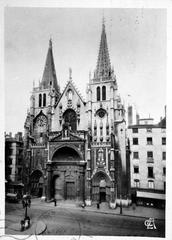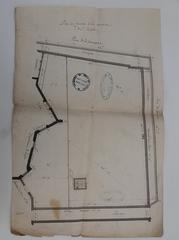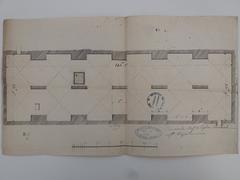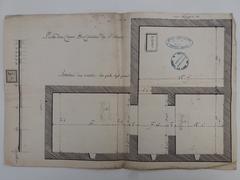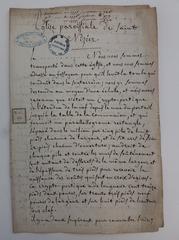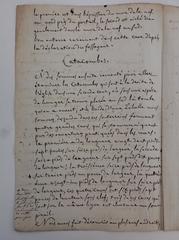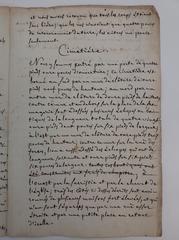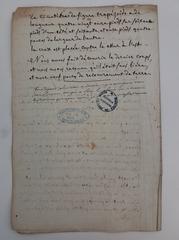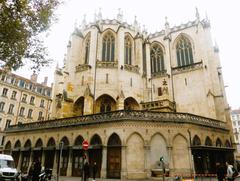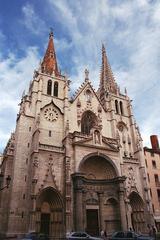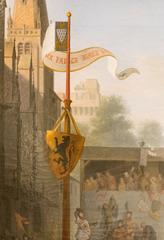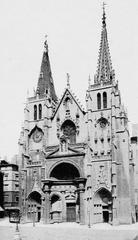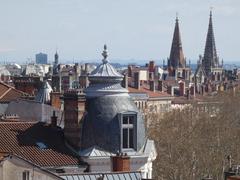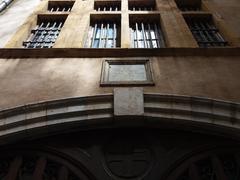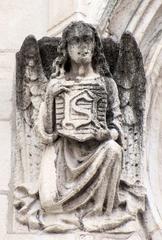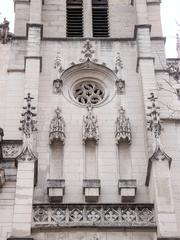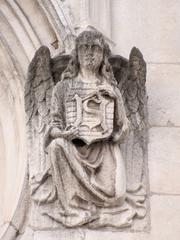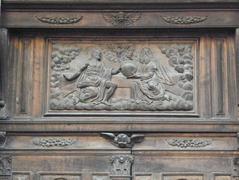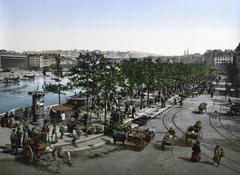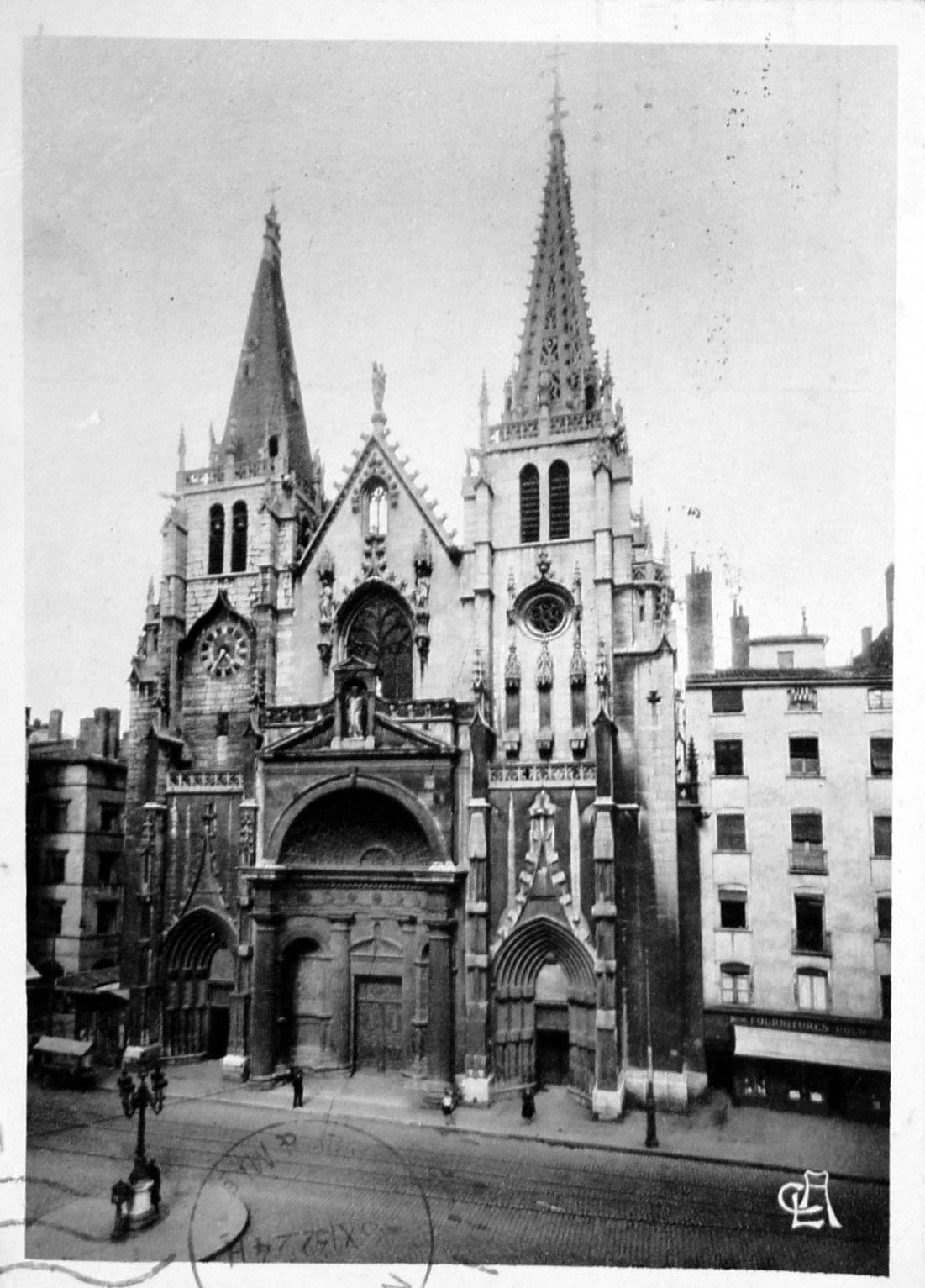
Visiting Église Saint-Nizier in Lyon: Complete Guide to History, Hours, Tickets, and Tips
Date: 14/06/2025
Introduction
Église Saint-Nizier is a cornerstone of Lyon’s spiritual and architectural heritage, seamlessly blending nearly two millennia of history with breathtaking Gothic and Renaissance artistry. Located in the heart of Lyon’s UNESCO-listed Presqu’île district, the church invites visitors to uncover layers of early Christian roots, medieval craftsmanship, and vibrant community life. Whether you are passionate about history, architecture, or faith, this guide provides all the essential information for a memorable visit—covering the church’s past, visiting hours, accessibility, tickets, and insider travel tips. For background and practical details, see Visitons Lyon, Patrimoine Lyon, and Saint Nizier.
Historical Overview
Origins: Early Christianity and Martyrdom
The story of Église Saint-Nizier begins in 177 AD, a pivotal year marked by the persecution of Lyon’s first Christian community. According to tradition, this site became sacred as the burial place of Saint Pothin, Saint Irénée, and the martyrs of Lyon, notably Sainte Blandine. By the 5th century, a basilica known as the “Saint Apostols Basilica” stood here, potentially serving as Lyon’s first cathedral (Patrimoine Lyon; Pauline Jaricot).
Medieval Development and the Name of Saint Nizier
The church gained its current name in 579 after Saint Nizier, bishop of Lyon from 553–573, was buried here. His tomb became a pilgrimage destination, further elevating the church’s status. Despite being sacked by Saracen invaders in the 9th century, the church continued to play a central role in the city’s religious and social life (Wikipedia; Visit Lyon).
Gothic Reconstruction and Renaissance Flourishes
In 1306, Archbishop Louis de Villars established the church as a collegiate institution, prompting a reconstruction campaign that transformed the structure into a Flamboyant Gothic masterpiece. The main phase lasted until 1454, resulting in soaring vaults and intricate sculptures. The 16th-century Renaissance portal, long attributed to Philibert de l’Orme but now linked to Jean Vallet, remains a striking feature (Patrimoine Lyon). During the Wars of Religion in 1562, Protestant forces looted and damaged the church, including the desecration of Saint Nizier’s tomb.
Civic and Social Importance
From the 14th century, Église Saint-Nizier was pivotal in Lyon’s civic life, hosting meetings and elections for municipal leaders (échevins). Even after the Consulate moved to the Hôtel de Ville in the 17th century, the church remained the heart of the city’s largest parish (Mairie2 Lyon).
Architectural Highlights
Église Saint-Nizier is unique for its two asymmetrical towers: the 15th-century north tower with its red-tiled roof and clock, and the taller, neo-Gothic south spire completed in the 19th century. The Renaissance portal and the nave’s six bays, flanked by nine side chapels, create a harmonious blend of styles (Vanupied). The interior showcases notable works, such as the baroque Virgin Mary statue in the Notre-Dame de Grâce chapel and a painting of Saint-Nizier by students of Antoine-Jean Gros (Visitons Lyon).
The Crypt and Pauline Jaricot
The crypt, originally Merovingian, was redesigned in the 19th century with mosaics by Ennemond Mora, inspired by Gaspard Poncet’s designs. It commemorates the martyrs of 177 AD and contains the tomb of Pauline-Marie Jaricot, founder of the Society for the Propagation of the Faith (Pauline Jaricot).
Modern Restorations and UNESCO Recognition
The 19th and 20th centuries brought significant restorations, including neo-Gothic interior updates and new stained glass. The church was inscribed as a UNESCO World Heritage site in 1998. A major restoration campaign launched in 2023 aims to preserve the south aisle, chapels, mosaics, and the crypt, with completion expected by the end of 2025 (Tribune de Lyon; Mairie2 Lyon).
Practical Guide to Visiting Église Saint-Nizier
Location and How to Get There
Église Saint-Nizier is located at Place Saint-Nizier, 69002 Lyon, within the Presqu’île district. It is easily accessible by public transport:
- Metro: Cordeliers (Line A), Hôtel de Ville–Louis Pradel (Lines A and C)
- Bus: Multiple lines stop nearby
- Parking: Several public car parks are available in the area The central location allows convenient exploration of nearby landmarks such as Place des Terreaux and the Museum of Fine Arts (welovelyon.com).
Visiting Hours
- Monday: 14:00–18:30
- Tuesday to Sunday: 10:00–12:00 and 14:30–18:30
Hours may vary during holidays and special events, so check the official parish website for updates.
Tickets and Entry
Entry to Église Saint-Nizier is free for all visitors. Donations are welcome to support maintenance and restoration efforts. Special guided tours or cultural events may require advance booking or a fee (lyon.evous.fr).
Accessibility
- Wheelchair access: The main entrance is accessible, though some historical areas such as the crypt may have limited access.
- Assistance: Available upon request; contact the parish in advance to arrange specific accommodations.
Guided Tours and Cultural Events
While regular guided tours are not offered by the church itself, information panels in French provide valuable context. Some local operators include Saint-Nizier in their walking tours of the Presqu’île. The church also hosts concerts, art exhibitions, and special events—details can be found on saintnizier.fr.
What to See: Architectural and Artistic Treasures
- Renaissance Portal: An ornate entrance with classical motifs, crafted in the late 16th century.
- Asymmetrical Spires: The 15th-century north tower and 19th-century south spire create a striking silhouette.
- Stained Glass Windows: Vibrant 19th-century glasswork depicting saints and biblical scenes.
- The Grand Organ: Installed in 1885, used for concerts and religious celebrations.
- Chapels: Each contains unique altars and devotional art, notably Notre-Dame de Grâce and Saint-Pothin.
- The Crypt: A place of historical reverence, accessible during special events.
- Tomb of Pauline Jaricot: Founder of the Society for the Propagation of the Faith, canonized in 2022.
Religious Services and Community Life
Église Saint-Nizier is an active parish. Visitors are welcome to attend:
- Sunday Masses: 10:30 (main mass), 18:30 (youth mass)
- Weekday Masses: Tuesday–Friday at 19:00; Wednesday at 7:00; Saturday at 12:00
- Confessions: Tuesday–Friday 18:00–19:00; Saturday 11:00–12:00
Special events include the annual parish festival on June 28 and various pilgrimages (saintnizier.fr).
Tips for Visitors
- Dress Code: Modest attire is required; cover shoulders and knees.
- Photography: Permitted for personal use; avoid flash and tripods, especially during services.
- Quiet Reflection: Maintain silence during services and when others are praying.
- Best Times to Visit: Weekday afternoons are usually quieter; weekends and festivals are busier and more vibrant.
- Nearby Amenities: Numerous cafés, restaurants, and shops are nearby.
Frequently Asked Questions (FAQ)
Q: What are the visiting hours?
A: Monday 14:00–18:30; Tuesday–Sunday 10:00–12:00 and 14:30–18:30.
Q: Is there an entry fee?
A: No, entry is free; donations are appreciated.
Q: Are guided tours available?
A: No regular tours, but local operators may include the church in their routes.
Q: Is the church accessible to people with disabilities?
A: Yes, the main entrance is accessible; some areas may be restricted.
Q: Can I take photographs inside?
A: Yes, but please be discreet and respect services.
Q: Are there special events I can attend?
A: Yes, including the parish festival on June 28, concerts, and pilgrimages.
Visual Highlights
- Exterior Facade: Distinctive Renaissance portal and asymmetrical towers.
- Interior: Soaring Gothic vaults, stained glass windows, and chapels.
- Crypt: Historical mosaics and the tomb of Pauline Jaricot.
- Map: Central location in the Presqu’île district.
Final Thoughts and Recommendations
A visit to Église Saint-Nizier is a journey through Lyon’s spiritual and cultural evolution—an experience that unites early Christian martyrdom, medieval artistry, and vibrant contemporary parish life. The church’s architectural features, compelling history, and welcoming atmosphere make it a must-visit for anyone exploring Lyon. Plan your visit to coincide with mass or special events for a deeper connection, and be sure to explore the Presqu’île’s other landmarks nearby.
For up-to-date information on visiting hours, restoration updates, and community events, consult the official parish website and trusted local guides (welovelyon.com; lyon.evous.fr). Download the Audiala app for guided audio tours and additional cultural insights.
Sources
- Visitons Lyon
- Patrimoine Lyon
- Saint-Nizier Church (Wikipedia)
- Mairie2 Lyon
- Tribune de Lyon
- Official Parish Website Saint Nizier
- welovelyon.com
- lyon.evous.fr
- Pauline Jaricot
- Vanupied
- Visit Lyon
